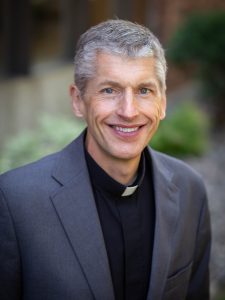 By Pastor Craig Pederson
By Pastor Craig Pederson
As the odometer on my body passed the 54-year mark earlier this summer, I gave thanks for the gift of living a relatively healthy life thus far. I also took stock of the “routine maintenance” items one must tend to when reaching that odometer reading, and I’m still working on some of those!
But I have also been feeling the effects of a few midlife “unexpected repairs.” Over the past five years I’ve had two orthopedic surgeries (quadricep tendon reattachment to the knee, and rotator cuff shoulder repair) and another orthopedic intervention (immobilizer brace for three months on a partially torn Achilles’ tendon).
As many of you know, with these injuries or procedures you don’t just undergo the surgery or get fitted for a brace then walk out the door where life returns to normal. There is a prescribed period of healing and recovery, with a corresponding regimen of physical therapy to train the body parts to work again – both on their own and in relation to surrounding body parts. Physical therapists, for whom I have the utmost respect and appreciation, guide this recovery journey.
At a visit with my physical therapist a few weeks ago, he helped me identify why my recovery for both my shoulder and knee may have stalled out. He talked about the difference between “eccentric” and “concentric” muscle exercises. I’m sure therapists have talked with me about this distinction in the past, but on this particular visit it really clicked for me.
Briefly, in a concentric movement, the muscle tension rises to meet the resistance then remains stable as the muscle shortens. During eccentric movements, the muscle lengthens as the resistance becomes greater than the force the muscle is producing.
“During my therapy work, I had been focusing all my energy on concentric movements – pushing against the weight of the resistance and then quickly returning to the starting position to do it again.”
So, what does that mean? If you think of a pushup, the concentric movement is when you “push up” from the ground to a position where your arms are fully extended. The eccentric movement is when you lower yourself back down to the starting position close to the ground. Recent physical therapy research (according to my therapist) shows that eccentric movements produce greater strain on muscles, but also produce greater healing and strength development when done properly.
During my therapy work, I had been focusing all my energy on concentric movements – pushing against the weight of the resistance and then quickly returning to the starting position to do it again. I hadn’t been working at all on the tension of the resistance on the way back to the starting position. I’ve been practicing this new focus in my exercises, and the results have been remarkable!
WHY AM I WRITING a church blog about physical therapy and muscle movements?
This new insight made me think about recent movements within the church. For as long as I can remember, the predominant approach to ministry has been to push harder – push for more members, more money, more programs, more publicity. When a program or idea is exhausted, we go back to the drawing board and start pushing on something new. This approach is understandable and even successful in some ways.
But the pandemic, along with racial justice awakenings by the dominant culture and economic challenges faced by everyone, forced us to view ministry differently. Strains and forms of resistance that we hadn’t reckoned with before became apparent. The pain and struggles have been significant. We’ve needed to learn how to use our spiritual muscles in new ways.
“Out of the disruption and change, we are practicing our faith and experiencing community in new ways.”
Now I see new growth and new strength emerging in our churches. We increasingly understand that we can’t just “go back” to some sort of normal that wasn’t working so well for everyone in the first place. Out of the disruption and change, we are practicing our faith and experiencing community in new ways. With growing wisdom and humility, we see how God is at work not just inside the church but also in the lives of our neighbors outside the church.
We are entering a new season. Rally Sundays mark the return of additional worship services, Sunday School and Christian education programs, and increased outreach efforts. Many churches will participate in “God’s Work, Our Hands” activities that will bless their surrounding communities, even as participants say they are blessed by the service they provide to others.
As we bear witness to the love of Christ in the world, I pray that our hands – and our hearts and minds – will be open to new healing, growth, and strength in the days ahead.

